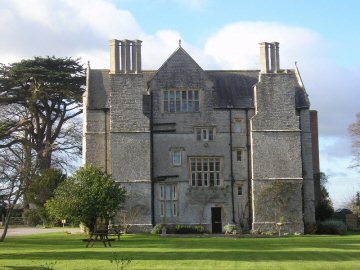
Shapwick House
Shapwick
Somerset
The A39 Trunk Road from Bridgwater to Glastonbury is Roman in origin, but this part of Somerset was developed long before the Centurion Cohorts arrived. Just to the north of the road lies the small village of Shapwick - one of the most intensively examined archaeological sites in the British Isles. Shapwick is the home of 'The Sweet Track', one of the World's oldest known structures, consisting of a wooden causeway across the Somerset marshlands dating back 6000 years. Shapwick was also the site of Britain's largest ever find of Roman coinage, some 9,238 silver denarii found in 1998.
Since the mid 1990s the village has been under exhaustive examination by academics from the Universities of Bristol, Winchester, and Durham led by Mick Aston, best known for his starring role in the BBC's 'Time Team'. The 'Shapwick Project' has tested the hypothesis that although seemingly a typical English village, Shapwick was actually a very early experiment in the forcible movement of labour for economic development and financial gain.
It would seem that in the 10th Century the Monks of Glastonbury constructed a new village to be the centre of their sheep-rearing activities. (Shapwick means Sheep Farm) - a sort of mediaeval Milton Keynes on the edge of the Somerset Levels. The layout of the village streets and surrounding field systems all indicate that Shapwick was a planned development rather than the result of gradual change.

Shapwick House
Shapwick boasts not one but two fine, old, large houses. Shapwick house is an imposing Tudor manor house built in 1489 and substantially redeveloped in the 17th century by Sir Henry Rolle, the Lord Chief Justice and Chancellor of the Exchequer. The Down House, now a school, was part of the Rectory estate and has a beautiful dovecote on the lawn. The Church of St. Mary in Shapwick was constructed in the Early English style with a central tower built on 13th Century arches.
| There is no war memorial in Shapwick, but it was not until 2007 that research into the Thankful Villages revealed a Somerset local newspaper article from just after the Great War which seemed to indicate that Shapwick is indeed one of these villages. A visit to St Mary's Church found two memorial plaques on the wall. One is to the memory of a past Vicar of the Parish, Colin Francis Montgomery, who died in 1906 at the early age of 38. Underneath this plaque is another, to remember 2nd Lieutenant Andrew Graham Montgomery of the Queen's Own Cameron Highlanders who was killed whilst on a night patrol near Arras on the 6th of September 1918, aged 19. He was the late Vicar's son, and must have been aged 7 when his father died. His mother, Evelyn, would have been required to vacate the Vicarage after the death of her husband and it is most probable that she would have left the parish to be nearer to her family, the Webbs, in Worcester. Andrew attended St Edmund's School, Canterbury, and then passed into Sandhurst, from where he was gazetted to the Cameron Highlanders in April 1918. |
|
Adding very powerful evidence that Shapwick is a Thankful Village, a Roll of Honour of Men from the Village who Served their King and Country was found. The list of names does not include that of 2nd Lieutenant Montgomery, but does bear the names of 32 villagers. (This would make Shapwick the numerically most blessed of the Somerset Thankful Villages). None of these names appears in the records of the Commonwealth War Graves Commission or in the CD-ROM 'Soldiers Died in the Great War'. It is concluded that the village, having been spared any fatalities in the Great War, gave space in their Church for a memorial to 2nd Lieutenant Montgomery next to that of his father.
Shapwick - the most studied village in England - is the Thankful Village that History forgot.
Text and photos - Rod Morris